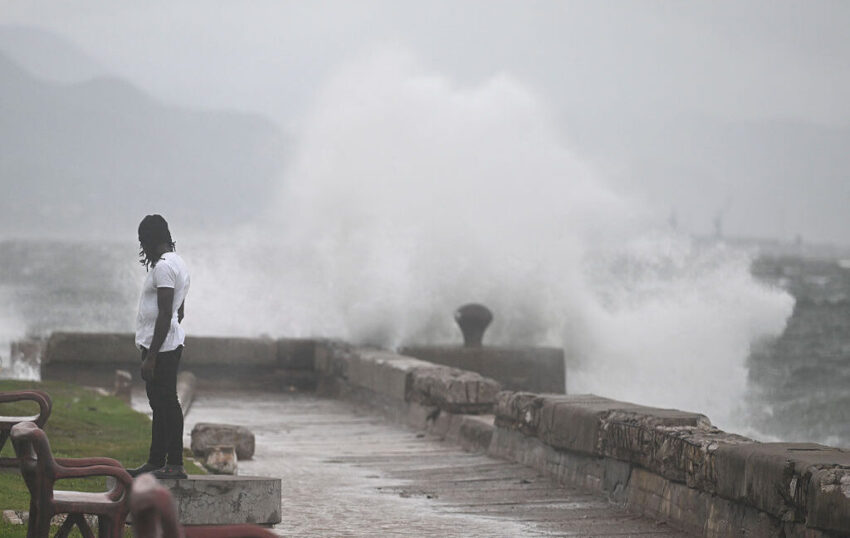
melissa strikes jamaica tied as most powerful Hurricane Melissa has made a historic impact on Jamaica, marking its place as one of the most powerful Atlantic storms to ever make landfall.
melissa strikes jamaica tied as most powerful
Overview of Hurricane Melissa
Hurricane Melissa struck southwestern Jamaica near New Hope on Tuesday at 1 PM ET, bringing with it sustained winds of 185 mph. This intensity ties Melissa with other notable storms in history, underscoring the severity of its impact. The National Hurricane Center (NHC) provided an update shortly after landfall, with specialist Larry Kelly describing Melissa as an “extremely dangerous and life-threatening” hurricane. The storm is expected to unleash heavy rainfall, damaging storm surges, and destructive winds across the island, which is home to approximately 3 million residents.
Historical Context of Atlantic Hurricanes
The Atlantic hurricane season typically runs from June 1 to November 30, with the peak occurring between August and September. However, storms like Melissa remind us that significant hurricanes can form and make landfall at any time during this period. Historically, hurricanes have been categorized based on the Saffir-Simpson Hurricane Wind Scale, which classifies storms from Category 1 (least severe) to Category 5 (most severe). Melissa, with its sustained winds of 185 mph, falls into the Category 5 category, indicating catastrophic damage potential.
Impact on Jamaica
The immediate effects of Hurricane Melissa on Jamaica are expected to be catastrophic. The combination of high winds, heavy rainfall, and storm surges poses a significant threat to both life and property. The heavy rainfall could lead to flash flooding, while the storm surge may inundate coastal areas, exacerbating the risk of destruction. The NHC has warned that the effects of Melissa will likely be prolonged, affecting the island’s infrastructure, economy, and public health.
Potential Damage and Risks
As Hurricane Melissa continues its path, the potential for widespread damage is significant. The following are key areas of concern:
- Infrastructure: Roads, bridges, and buildings are at risk of severe damage or destruction. The high winds can uproot trees and down power lines, leading to widespread power outages.
- Flooding: The heavy rainfall associated with Melissa could lead to flash floods, particularly in low-lying areas. This poses a risk not only to homes but also to critical infrastructure such as hospitals and emergency services.
- Public Safety: The combination of high winds and flooding creates dangerous conditions for residents. Evacuations may be necessary, and emergency services will be stretched thin as they respond to various incidents.
Emergency Preparedness and Response
In anticipation of Hurricane Melissa, local authorities have been mobilizing resources to prepare for the storm’s impact. Emergency services are on high alert, and shelters have been established to accommodate those in need. The government has urged residents to take the storm seriously and to follow evacuation orders if issued.
Public safety campaigns have been launched to inform residents about the necessary precautions. These include securing homes, stocking up on essential supplies, and having a plan in place for evacuation if needed. The importance of community preparedness cannot be overstated, as collective action can significantly mitigate the risks associated with such a powerful storm.
Long-term Implications
The long-term implications of Hurricane Melissa on Jamaica could be profound. Recovery from such a powerful storm often takes years, and the economic impact can be staggering. The following are potential long-term effects:
- Economic Impact: The destruction of infrastructure and homes can lead to significant economic losses. Tourism, a vital sector for Jamaica, may also suffer as the island works to recover.
- Public Health Concerns: Flooding can lead to waterborne diseases, and the disruption of healthcare services may exacerbate health issues among the population.
- Environmental Damage: The storm may cause significant damage to local ecosystems, including coral reefs and mangroves, which play a crucial role in protecting coastal areas.
Community Resilience and Recovery
In the aftermath of Hurricane Melissa, community resilience will be critical. Local organizations, government agencies, and international aid groups will likely collaborate to provide assistance and support for recovery efforts. The rebuilding process will require not only financial resources but also a commitment to sustainable practices that can help mitigate the impact of future storms.
Community engagement will play a vital role in recovery. Local leaders and residents must work together to assess damage, prioritize needs, and develop a comprehensive recovery plan. This collaborative approach can help ensure that the recovery process is inclusive and addresses the needs of all community members.
Stakeholder Reactions
As Hurricane Melissa made landfall, various stakeholders expressed their concerns and responses:
- Government Officials: Local and national leaders have been vocal about the need for preparedness and resilience. They have urged residents to heed warnings and take necessary precautions.
- Emergency Services: First responders are preparing for the worst, emphasizing the importance of community cooperation in ensuring safety during and after the storm.
- International Community: Global organizations and neighboring countries are monitoring the situation closely, ready to offer assistance as needed.
Lessons Learned from Past Hurricanes
The impact of Hurricane Melissa serves as a reminder of the lessons learned from previous storms. The importance of early warning systems, community preparedness, and robust infrastructure cannot be overstated. Each hurricane provides valuable data that can be used to improve future responses and resilience strategies.
Investments in climate resilience and disaster preparedness are essential for minimizing the impact of future storms. This includes enhancing infrastructure, improving emergency response capabilities, and fostering community engagement in preparedness efforts.
Conclusion
Hurricane Melissa’s landfall in Jamaica marks a significant moment in the history of Atlantic storms. With its staggering winds and potential for catastrophic damage, the storm serves as a stark reminder of the power of nature and the importance of preparedness. As the island faces the immediate impacts of the hurricane, the focus will shift to recovery and rebuilding, emphasizing the need for community resilience and collaboration.
The road ahead will be challenging, but with collective efforts, Jamaica can emerge stronger and more prepared for future storms.
Source: Original report
Was this helpful?
Last Modified: October 29, 2025 at 3:40 am
0 views















